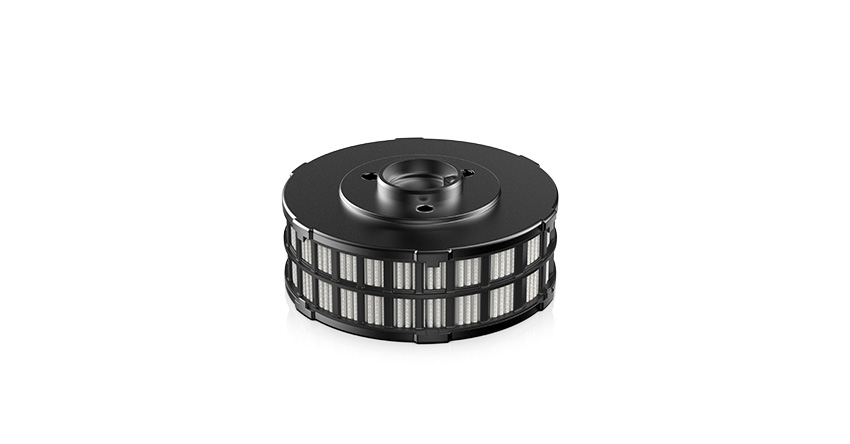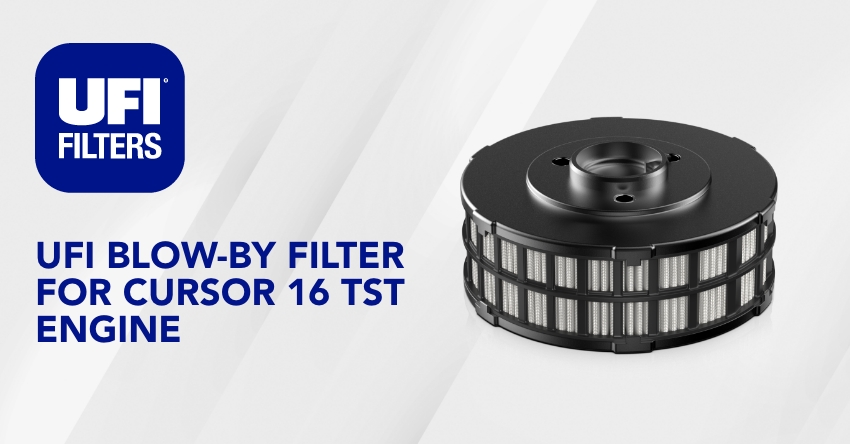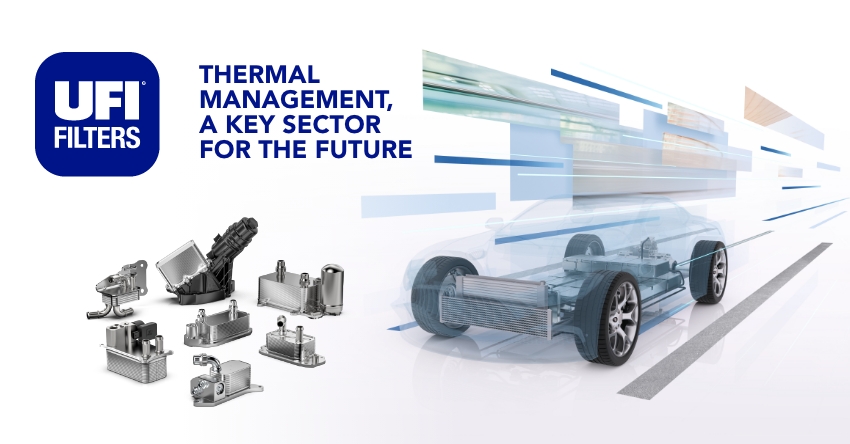UFI Filters, a leader in filtration and thermal management, as well as hydrogen filtration technologies, designs and manufactures the blow-by filter for the new Cursor 16 TST (twin-stage-turbine) engine, the FPT 6-cylinder engine for 4WD off-road applications.
Designed to offer extraordinary performance even in the most demanding missions, the new top-of-the-range engine, with market-leading compactness and weight/power features, ensures reduced running costs, high performance and exceptional productivity. These features are also enhanced by UFI Filters’ blow-by filtration technology, which filters and recovers oil aerosols generated by the engine in the combustion chamber. The filter plays a key role in reducing polluting emissions linked to crankshaft operation, preventing contaminating atmosphere emissions, such as carbon dioxide, nitrogen oxides and fine particles.
Blow-by, designed by UFI Filters for the Cursor 16 TST, is a rotary and self-cleaning filter, developed with a multi-layer filtering media made of synthetic fibres – FormulaUFI.Micron – and a metallic mesh to ensure its full operation over time.
Presented in 1998, the Cursor range undergoes continuous improvements and currently meets the Stage V Tier 4B/Final standard. This engine is used in 4WD farm vehicles, offering high productivity in the hardest work situations and reduced emissions and consumption, especially in one of the best performing tractors ever, the new Case IH Quadtrac 715 (called the Steiger 715 in the US market), presented in August at the Farm Progress Show in Illinois – the largest US outdoor farming trade fair.
Giorgio Girondi, Chairman of the UFI Filters Group, comments: “UFI Filters’ presence in the off-road heavy-duty vehicle sector is constantly increasing. With the blow-by filter for the Cursor 16 TST engine, 4WD farm vehicles can continue to work in an increasingly efficient way, while respecting the environment, ensuring the utmost engine protection, and reducing negative effects on the atmosphere to a minimum.”









